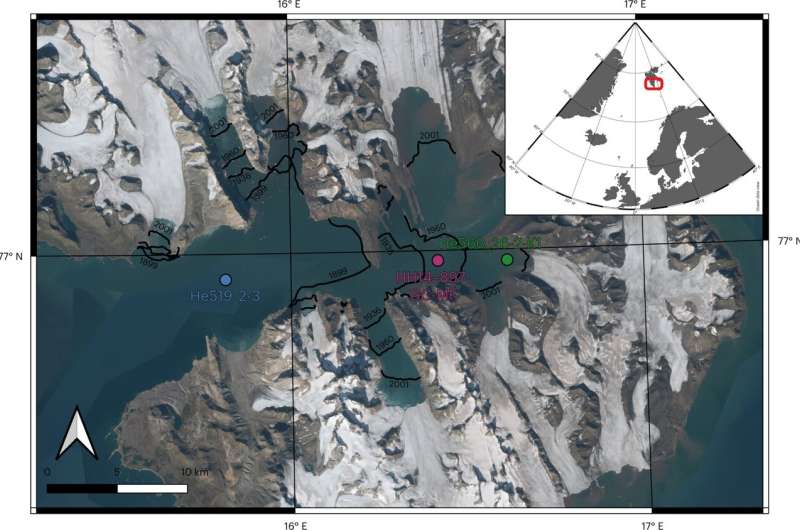This article has been reviewed according to Science X's editorial process and policies. Editors have highlighted the following attributes while ensuring the content's credibility:
fact-checked
peer-reviewed publication
proofread
Findings indicate that microbes living at the bottom of the fjords can use petrogenic carbon

New findings by Prof Witold Szczuciński, of Adam Mickiewicz University, on the carbon cycle in nature have been published in Nature Geoscience.
Glaciers erode rocks and transport them to fjords. These rocks, especially sedimentary rocks, often contain carbon. It was thought that this carbon is not used by organisms and gets buried with the sediments at the bottom of the fjords without any significant effect on the carbon balance in the seas and in the atmosphere.
However, the latest research results of a German-Norwegian-Polish team of scientists (Manuel Ruben, Gesine Mollenhauer and co-authors) indicate that microbes living in sediments at the bottom of the fjords can use petrogenic carbon, causing it to be reintegrated into the biological cycle of the element.
The research was conducted using cores of sediment taken from the bottom of Hornsund Fjord (Spitsbergen). The researchers used sediment cores dated with the isotopes 137Cs and 210Pb, and a full spectrum of studies of different forms of carbon, its compounds and carbon isotopic composition.
More information: Manuel Ruben et al, Fossil organic carbon utilization in marine Arctic fjord sediments by subsurface micro-organisms, Nature Geoscience (2023). DOI: 10.1038/s41561-023-01198-z
Journal information: Nature Geoscience
Provided by Adam Mickiewicz University




















